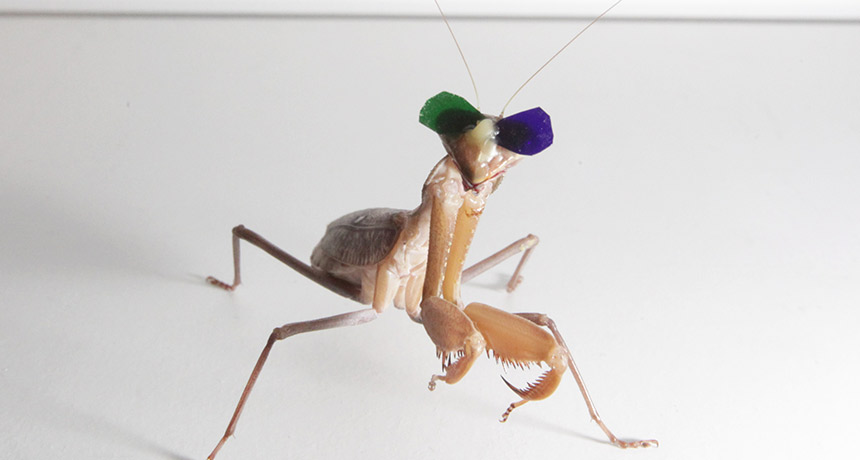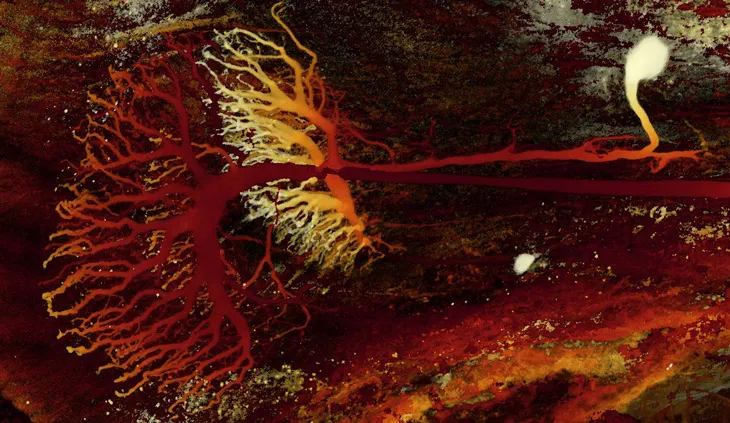Tiny glasses help reveal how praying mantises can see in 3-D
Newfound nerve cells in the insects’ brains play a role in depth perception

LIFE IN 3-D Colored filters let a praying mantis watch a 3-D video of a moving disk while researchers studied the nerve cells that contribute to the insect’s depth perception.
Newcastle Univ., UK








